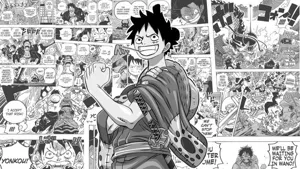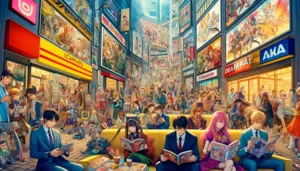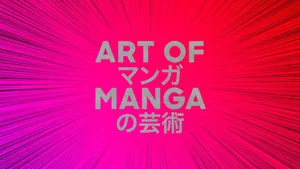How Manga and Doujin Communities Shape Modern Digital Storytelling
Manga and doujin communities have profoundly influenced the way digital stories are crafted, shared, and experienced worldwide, blending artistic innovation, participatory fan culture, and transmedia expansion.
Manga and doujin communities are more than just fan hubs—they’re creative powerhouses reshaping how stories are told online. From self-published works to globally influential platforms, these communities champion independent voices and push the boundaries of visual storytelling in the digital age.
Manga’s Roots and Transformation

Manga originated as serialized graphic narratives in Japanese print media, evolving into a visual literature marked by a cinematic approach and patient, layered storytelling. Its unique structure, often using the kishōtenketsu pattern (introduction, development, twist, resolution), allows for a gradual build-up of worlds and characters, fostering emotional investment over lengthy arcs.
Modern manga’s transition from print to digital platforms—including web-based anthologies and apps—enabled broader distribution, instantaneous accessibility, and new genres for global audiences. Digitization has made manga not only a Japanese art form but a global phenomenon connecting diverse cultures.
Doujin Communities: Creative Independence and Global Socialization
“Doujin” refers to amateur, self-published works, encompassing fan art, fanfiction, indie comics, music, and games—often re-imaginings of existing manga, anime, or video game franchises. Doujin culture’s defining spirit is independence: creators produce content outside mainstream industry constraints, driven by passion and community dialogue rather than commercial gain.
The rise of digital platforms and social media has transformed doujin activities from niche subcultures to international networks, facilitating rapid collaboration, feedback, and immediate sharing of creative works.
Social networks strengthen these communities, allowing fans and creators to connect globally, participate in real-time interactive experiences (such as “bullet comments”), and even coordinate collaborative projects. This participatory ecosystem has turned platforms like Bilibili, Pixiv, and Twitter into powerful engines for digital creativity and cultural innovation.
Transmedia Storytelling: Expansion Across Platforms
A hallmark of manga and doujin communities in the digital age is their embrace of transmedia storytelling—a narrative strategy in which stories unfold across multiple formats, from print to animation, live-action films, and games.
In Japan, iconic manga and anime franchises are regularly adapted into movies, TV shows, and interactive media, benefitting from manga’s detailed artwork as blueprints for broader storyworlds. This technique enables creators and fans to expand the narrative universe, sometimes adding entirely new storylines and perspectives unique to each medium.
South Korean webtoons, themselves a product of doujin-like innovation, have become templates for television dramas and films, reshaping local and global entertainment industries. Global corporations seek out manga, anime, and webtoon properties for adaptation, recognizing their built-in audiences and rich visual storytelling.
Fan Culture: Driving Diversity and Innovation

Fan communities do more than consume content—they actively create, remix, and reinvent it. The boundary between professional (“canon”) and fan-created (“doujin”) works has blurred in the digital era, with fans influencing story direction, character development, and even industry trends. Manga and doujin communities promote inclusivity, local identity, and global interaction, fostering a sense of belonging and empowerment among fans.
Innovations born in these spaces often ripple outward, inspiring new genres, narrative techniques, and participatory formats in mainstream media. Events like Comiket (Comic Market) in Japan showcase the scale and vitality of doujin culture—once grassroots, now a pillar of digital storytelling.
Manga and Webtoons Influence Gobal Storytelling Trends
Manga and webtoons have become central forces in reshaping global storytelling trends, bringing new art styles, narrative techniques, and interactive formats to audiences worldwide.
Art Styles and Narrative Techniques
Manga introduced dynamic panel layouts, expressive characters, and detailed backgrounds that have influenced Western comics, graphic novels, and animation. The use of serialised storytelling enables deeper character development and intricate plots, fostering emotional investment and long-term engagement. Webtoons, with their vertical scroll format, offer a seamless reading experience designed for smartphones, making comics more accessible and changing how stories are visually delivered.
Genre Diversity and Emotional Storytelling
Both manga and webtoons embrace a wide array of genres such as drama, fantasy, horror, and slice-of-life, catering to varied tastes and interests worldwide. Webtoons in particular have amplified “slice-of-life” and emotionally-driven storytelling, creating relatable narratives that resonate with diverse global audiences. This inclusivity has helped create a broader, more international readership.
Serialisation, Community, and Interactivity
Manga and webtoons are released episodically, often using cliffhangers and plot twists, which encourage readers to return and foster vibrant online discussions. Platforms supporting webtoons, such as LINE Webtoon and Tapas, have millions of global readers, enabling artists to reach fans across cultures and languages. Features like interactive sound and animation as well as commenting threads and fan artwork build stronger reader engagement and community participation.
Cultural Fusion and Cross-Media Influence
Both media have catalyzed a cultural crossroads, with Eastern and Western artists now blending visual and storytelling styles. Manga and webtoons inspire adaptations into anime, video games, films, and TV dramas, further driving global pop culture and expanding the reach of their stories. Cross-media collaboration, pioneered by manga creators like Osamu Tezuka, remains a hallmark of global storytelling today.
Accessibility and Democratization
Webtoons leverage digital publishing to allow independent creators to share stories outside traditional industry networks, democratizing comic production and encouraging diversity in creative voices. This openness invites a huge range of perspectives, fostering innovation in narrative style and subject matter.
In summary, manga and webtoons have significantly diversified and internationalized storytelling, defining new standards in art, structure, and audience participation for the digital age.

Conclusion: The Future of Digital Narrative
The intersection of manga and doujin communities with digital storytelling has opened new frontiers for creativity, diversity, and community-driven narratives. These communities continue to drive innovation in story structure, visual aesthetics, cross-platform adaptation, and global fan engagement. In the coming years, their influence will likely grow, paving the way for even richer, more interactive, and inclusive forms of digital storytelling.
Manga teaches patience and moral depth, while doujin culture delivers immediacy, collaboration, and grassroots diversity. Together, they redefine what it means to tell—and experience—a story in the digital age.
FAQ: How Manga and Doujin Communities Shape Modern Digital Storytelling
What is the difference between manga and doujin communities?
Manga communities revolve around mainstream, professionally published comics from Japan, while doujin communities focus on self-published works, often by independent or amateur creators. Doujin works include fan fiction, original stories, and experimental formats that thrive outside mainstream publishing.
How have doujin communities influenced digital storytelling?
Doujin communities have pioneered new forms of interactive storytelling, such as choice-based narratives and open-world formats. Readers often participate directly in shaping stories, fostering collaborative and innovative narrative experiences.
Why are digital platforms important for these communities?
Digital platforms have democratized creation and distribution, allowing independent creators to publish and share their work worldwide. This has enabled rapid growth of global fanbases and cross-cultural exchanges, making digital storytelling more diverse and accessible.
Do manga and doujin works impact other genres and media?
Yes, the creativity and narrative techniques developed in doujin and manga communities have inspired trends across comics, games, and web-based storytelling, influencing mainstream media and entertainment globally.
What makes storytelling in manga and doujin communities unique?
Storytelling often features sequential art, vibrant characters, and compelling world-building. Doujin circles, in particular, nurture experimentation in narrative structure, visual style, and interactivity, cultivating a space for marginalized or emerging voices to thrive.
How do communities support new or marginalized creators?
Communities provide mentorship, feedback, and exposure through critique, fan interactions, and collaborative projects. Many platforms champion diversity, helping underrepresented creators find audiences and supportive peers.
What role does fan participation play in digital storytelling?
Fans not only consume but also create, remix, and expand upon stories, engaging in group authorship and social reading. This participatory culture transforms storytelling into a collaborative, ever-evolving practice.
How has the global popularity of manga and doujin changed digital storytelling?
The widespread reach of manga and doujin content has blended cultural elements, narratives, and storytelling methods from different regions, making digital storytelling richer and more inclusive worldwide.
Can doujin creators transition to professional careers?
Many successful manga artists and writers began as doujin creators, building skills, portfolios, and fanbases within grassroots communities before moving on to commercial publishing or collaboration with professional studios.
What are some examples of innovations originating from doujin communities?
Innovations include reader-driven branching narratives, collective world-building, and hybrid art forms blending visual novels, interactive comics, and digital games—formats that push the boundaries of traditional storytelling.